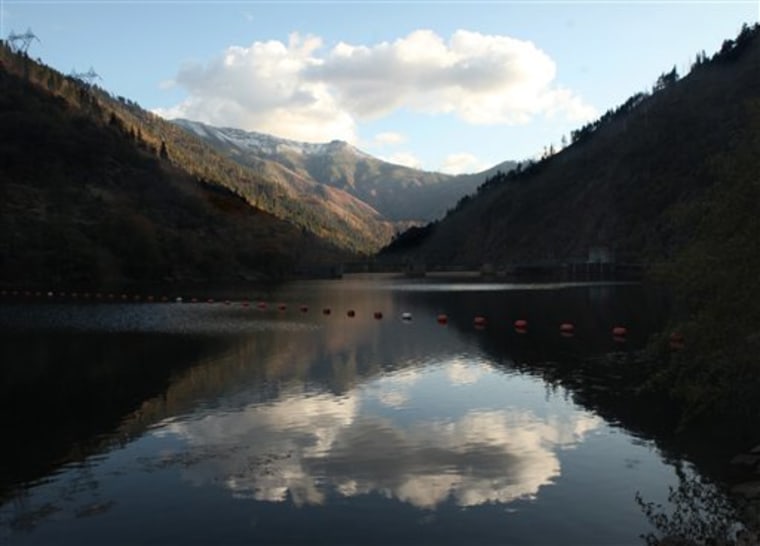On a mountaintop clearing in the Sierra Nevada stands a tall metal platform holding a crude furnace and a box of silver iodide solution that some scientists believe could help offer relief from searing droughts.
This is a cloud-seeding machine designed to increase rainfall by spraying a chemical vapor into the clouds. Under the right conditions, it can help water droplets grow heavy, coalesce and fall to the ground.
Faced with water shortages, growing populations and the threat that climate change could make matters worse, governments around the globe have increasingly turned to cloud seeding in an attempt to wring more rain and snow from the sky.
But the efforts are threatened by budget cuts in states struggling to begin an economic recovery and by critics who insist the technique is unproven and might pose a threat to the environment.
"When there is a drought in a particular country, they start looking at alternative sources of freshwater, and cloudy air is one source," said Duncan Axisa, a scientist at the National Center for Atmospheric Research in Boulder, Colo., who supports expanding cloud-seeding research.
Government agencies and utilities throughout the United States spend an estimated $15 million a year on cloud seeding, and the number of projects has jumped by nearly a third in the last decade.
But spending in the United States is far lower than in many other countries. China spends an estimated $100 million a year on cloud-seeding efforts that include using anti-aircraft guns and rocket launchers to blast the sky with silver iodide.
"What's going on in the U.S. is tiny," said Arlen Huggins, an associate research scientist at the Desert Research Institute in Reno, Nevada. "There's more being done outside the U.S. than here."
Other countries conducting cloud-seeding research include Australia, France, Greece, Saudi Arabia, Turkey and Venezuela.
Utilities are big backers
In the U.S., utilities that run hydroelectric dams are among the most active cloud seeders. They say it is a cost-effective way to increase limited water supplies by 10 percent or more. Cloud seeding is also used in Texas and the Midwest to make hail smaller, reducing crop damage.
Lack of federal funding has not stopped dozens of other cloud-seeding projects run by public agencies and private enterprise. In 2008, 63 projects in nine states were reported to the National Oceanic and Atmospheric Association. That's up from 48 a decade ago.
California officials estimate that cloud seeding throughout the Sierra Nevada mountains could produce another 300,000 to 400,000 acre-feet of water annually. An acre-foot is about enough water to supply a typical household for a year.
And proponents say cloud seeding is far cheaper than building a new dam or running ocean water through a desalination plant.
The National Research Council in 2003 found there was no convincing evidence to prove the technique works, but the panel's scientists acknowledged the potential and encouraged more study.
"I think there's more science necessary to understand what conditions it will work in and what won't work," said Roelof Bruintjes, a weather-modification expert at the National Center for Atmospheric Research in Boulder, Colorado. He was one of the authors of the 2003 report.
Remote-controlled seeding
Scientists say weather conditions must be right for cloud seeding to work. In the Sierra Nevada, if passing storm clouds are cold enough, a meteorologist in San Francisco uses a radio signal to turn on PG&E's mountaintop cloud seeder. The invisible silver iodide vapor is carried by the wind into the clouds, and it can begin to snow within 15 to 30 minutes.
Clouds can also be seeded by airplanes equipped to release the vapor.
Questions have been raised about the environmental effects, including whether the silver iodide solution used to stimulate snow harms water supplies. Silver iodide is a salt that does not dissolve in water.
The Weather Modification Association, which has a board comprised of federal researchers and program operators, published a study last summer concluding that years of research have shown no "environmentally harmful effects" from silver iodide.
